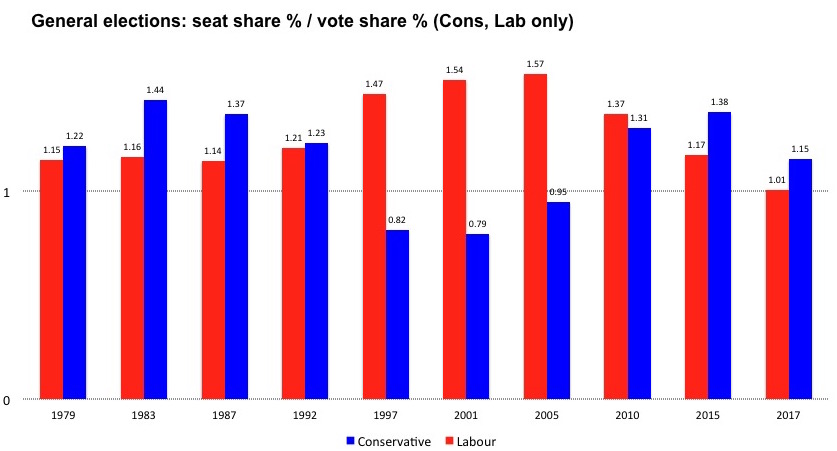Hello hung parliament: Britain is back into deals and power arrangements, after just two years of Conservative majority. Another election in 2017 is a possibility if things fall apart.
The question I want to explore is this: is the first-past-the-post system (FPTP) delivering what voters want?
FPTP is one of the main criticisms of the UK political system. Each MP just needs to win the most votes in a seat, which can mean that they need to win far fewer than half the votes to be elected. That means smaller parties can pick up lots of votes, and get no seats, and results are skewed towards the winning party.
The most egregious example of this is the UK Independence Party – UKIP – in the 2015 election. With 12 per cent of the overall count – 3.8 million votes – they won just a single seat. FPTP clearly screwed UKIP in 2015.
This is nothing new. The Liberal Democrats have always suffered in this way, and their manifesto invariably contains a section on voting reform, moving to systems such as single transferable vote.
Whatever the merits of other systems, the question for the British people is not just about smaller parties. Does FPTP skew the result towards one or both of the two main parties, Conservative and Labour?
To assess whether FPTP is delivering an unfair outcome, the best measure is to look at the percentage of seats won compared to the percentage of votes won. This takes into consideration the different number of seats available in each election, and (importantly) voter turnout.
A perfect system would deliver a score for each party of 1. That would mean votes translate into seats at exactly the same rate. A score above 1 means the party gets more seats for their votes; a score less than one is the opposite, the party gets fewer seats per vote.
The Lib Dems have clearly suffered, with their scores in the last 10 elections running like this: 0.25, 0.16, 0.38, 0.44, 0.43, 0.42, 0.17, 0.15, 0.14, 0.13.
UKIP’s 2015 result was 0.01 – far worse than anything the Lib Dems have endured. (The Green party’s score in 2015 and 2017 was 0.04 and 0.10 – also a terrible ratio).
Some smaller parties lose out – that’s clear. Others do better – the Scottish National Party have in the last two elections got around 1.8 – in other words, close to twice the seats that their vote share suggests. Sinn Fein, the DUP and Plaid Cymru have also all scored above 1. The lesson is that smaller parties do well if their vote is concentrated in a region, rather than spread out over England.
But I think the bigger issue is whether the main parties are getting seats far out of proportion. That’s a more alarming question, as it has far greater impact on whether a party can force through legislation that half the country doesn’t want.
The latest election has in fact delivered the fairest set of results in the last 40 years (looking at the last 10 general elections). The Conservatives got 1.15 seat share per vote share; Labour got 1.01. This is the only time in the data that I’m looking at that the winning party was below 1.2. FPTP is not the problem here in terms of delivering voter intention. In fact, a hung parliament is exactly reflective of the votes cast. Continue reading

